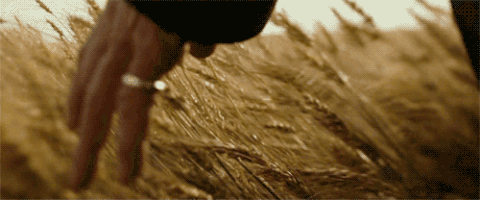🎬 #73 Hands In Wheat & Cinema Grammar.
There are certain shots or techniques within a shot that recur throughout cinema. It’s a bit like when The Matrix established the infamous bullet-time technique, over the next few years it was copied everywhere. This week I’m going to talk about two of the most famous examples that I can think of, or that are the most recognisable at least.
I’ll be focusing just on these shots and why they have become the equivalent of a cinematic shortcut to a certain emotion - like the film equivalent of WTF or LOL. The two shots are used in this week’s films but neither were the first to use them - but for most of us they are the most iconic versions of the shots.
Happy choosing, happy viewing
Bry
FILM ONE: JAWS
1975 Dir Steven Spielberg
I’m sure most, if not all, of you have seen Speilberg’s tale of a shark wreaking havoc on a small beachside resort, and those of you who’ve seen it will remember its many iconic moments. Not the least of which is the shot in question - the famous ‘Dolly Zoom’ - as seen in the gif above. The effect is achieved by ‘dollying’ [moving] the camera towards the subject or away from them while zooming in or out at the same time.
Here Spielberg uses it to cinematically get that ‘stomach dropping/ heart sinking’ feeling onto celluloid when the father, Brody [played by Roy Scheider] realises the son is in the area the shark is headed. This deceptively simple disorientating effect together with John Williams’ shrieking score puts us right in Brody’s shoes. It’s fear and panic distilled into one beautifully choreographed camera move.
Even though Speilberg used it to startling effect in Jaws, it was his cinema forefather - Hitchcock who first brought it into film language. He had devised of the idea when shooting Rebecca but it wasn’t until Vertigo [18 years later] that he pulled it off with the help of second unit camera man Irmin Roberts. Whereas Speilberg uses it to frame a character’s emotional state of mind, Hitchcock uses it to put us in that character’s POV as they have an episode of Vertigo, the feeling that the world is dropping away from them, out of their control.
This is one of the things that really excites me about filmmaking - we’re only into the first hundred years of the medium, who knows what language there is left to discover, what camera movements are yet to be found to distill such powerful emotions.
TL;DR Revisit a perfect exercise in tension and drama in Speilberg’s film that birthed the modern blockbuster and used the dolly zoom to stunning effect.
*Available for a small rental fee on Amazon, Apple, Google and YouTube in the US/UK and on Netflix in the UK.
Fact: John Williams conducted the orchestra during the filming of the 1976 Oscars and when he was announced as the winner he had to run on stage to collect and then run back to continue conducting the orchestra.
FILM TWO: GLADIATOR
2000 Dir Ridley Scott
Scott’s epic film, like Jaws, is filled with iconic moments - none more enduring that this simple close-up tracking shot of Maximus’ hand gracing wheat in his farm. It’s the shot that opens the film and stands for home, for connection, for the beauty of the natural world and the love it can nurture. It’s an emotional shot because, for us and the character, we understand it as shorthand for home and all the love it holds - especially in stark contrast to the hard cold ground and battlefields he finds himself in. This is about humankind’s connection to the wonder of the world.
But like Speilberg, Scott wasn’t the first to use this shot - the first known use was in D.W Griffith’s controversial Birth Of A Nation, and it’s continued through the films of Malick and is also famously used in Andrew Dominik’s The Assassination of Jesse James By The Coward Robert Ford. There is a lyrical, whimsical beauty to the moment - that’s been copied so many times that there’s even a Twitter feed dedicated to hands in wheat. It’s a shot that gives us something we don’t even really understand on a primal level, but we feel it.
TL;DR Witness the iconic hand in wheat moment in Ridley Scott’s Gladiator.
*Available for a small rental fee on Amazon, Apple, Google and YouTube in the US as well as the UK.
Fact: Nick Cave, who co-scored The Assassination of Jesse James By The Coward Robert Ford, wrote a script for a sequel to Gladiator that took the film in brave new directions, using Roman mythology as his basis.




